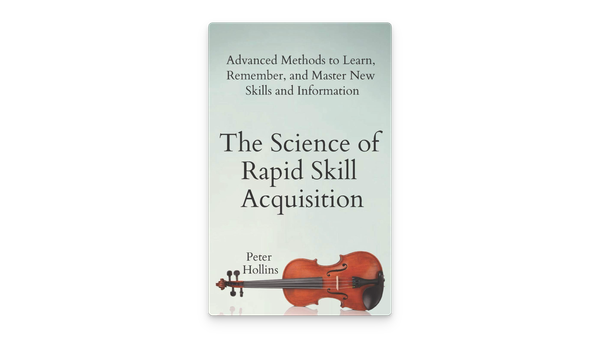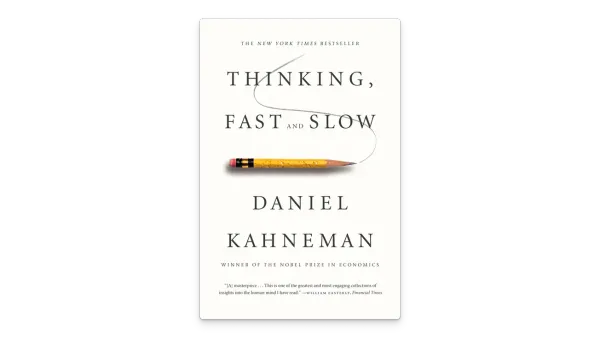The Learning and Development Handbook
What’s in it for me? A new approach to workplace learning.
Michelle Parry-Slater’s Learning and Development Handbook opens with an observation that’s unlikely to shock anyone. The workplace, she notes, is changing – fast.
The skills needed in today’s business world aren’t the skills we needed in the past. Keeping up with change means the same thing for organizations as it does for individuals: upskilling and reskilling. So far, so uncontroversial. Everyone knows that, right?
Well, knowing something and acting on that knowledge are two different things. Which brings us to a second – much more surprising – observation.
Despite the digital revolution, most companies still rely on classroom-based, face-to-face learning to train their employees. Studies show, however, that the typical employee forgets around three quarters of what they learn in such settings within just one day. Put differently, most companies are spending a lot of money and wasting a lot of time to achieve very little.
Michelle Parry-Slater is convinced that there’s a better way of doing things – that’s why she wrote this Handbook. And in this summary, we’ll dig into her alternative approach to workplace learning.
In these summary, you’ll learn
- Why training courses often aren’t about work at all;
- What the digital present and the analogue Stone Age past have in common; and
- Why it’s sometimes best to let people do their own learning.
Organizations can’t rely on old learning models in a changing world.
To start off, we’re going to be talking about learning in a particular context – organizations and companies. In other words, we’ll be looking at professional development.
Our question, then, is how professionals master new skills and pick up the know-how they need in today’s fast-moving workplaces. But before we get to that, let’s take a step back and think about learning in general. How does any learning take place?
From schools to universities, public talks, and office training programs, it often happens in a similar way. This learning model centers around the sage on the stage. Let’s break that down.
Although the specifics vary, the idea is usually the same. There’s an expert – an individual with special access to some kind of knowledge. Then there’s the audience – the people who turn up at a certain time and place to learn from that sage. This model is face-to-face: everyone is present in person. It’s also top-down. The teacher talks; the audience listens.
There’s a reason this model is so common – it can be very effective. As we found out during the Covid-19 pandemic, something important gets lost when traditional learning environments like classrooms disappear. And there are things you really only can learn if you’re physically present. Online-only courses aren’t a great way of acquiring first-aid skills, for example. You need the real-world, face-to-plastic experience of breathing into a CPR doll. It’s the same with learning to drive – you have to sit in an actual car on a real road with a bonafide instructor.
Thing is, though, face-to-face learning isn’t the only way people can learn. It’s a cliché, but, like so many clichés, it’s true: the digital revolution is a game-changer. The smartphones in our pockets give us unprecedented access to knowledge, bypassing that sage on the stage. The laptops in our bags meanwhile allow us to work remotely, eroding the old emphasis on physical presence. These are simple facts, Michelle Parry-Slater says, and neither organizations nor learning and development specialists can wish them away. The upshot? We need new approaches to professional development.
That doesn’t mean abandoning tried-and true methods in favor of fashionable gimmicks. Immediately adopting the latest tech isn’t a cure-all. But we can’t just keep doing what we’ve always done because, well, that’s how things are done. What we need to do, she suggests, is spend more time thinking seriously about learning in this new environment. In some cases, face-to-face will still be the way to go; in others, it won’t. Oftentimes, the best approach will be to blend different models.
Take just one example. When the author worked with the Girl Guides, she looked at their first-aid program. She realized that some 80 percent of the organization’s refresher courses could be taken online. You just don’t need people to be physically present to sit multiple-choice tests on basic medical knowledge. A skill like CPR is different – you need to practice it for real, with an expert. And that’s what the Girl Guides do. They keep the analogue stuff analogue and move the rest online.
The point, here, is that face-to-face learning isn’t going away – it’s too important. But it’s not the be-all and end-all of learning. That, Parry-Slater thinks, is the key lesson for organizations and their learning and development teams. In practice, though, that’s often easier said than done.
Face-to-face learning is popular, but not for the reasons people tend to give.
In 2020, the Chartered Institute of Personnel and Development, Britain’s leading association of HR professionals, published its annual “Learning and Skills at Work” report. Its conclusion: face-to-face learning was still the dominant approach to professional development in Britain. Evidence from other Western countries paints a similar picture.
Organizations, it seems, are resisting change and sticking to old learning approaches even as technological change opens up alternatives. But where does this opposition to new ideas and models come from? One factor is simple inertia. Learning in professional contexts has mirrored classroom-based learning since the Industrial Revolution. The idea that learning happens when an expert takes to the stage and delivers their knowledge to a captive audience has deep cultural roots. That’s hardly surprising – it’s an idea that’s been around for a long time.
That’s not the only factor, though. In fact, the most common argument in favor of face-to-face learning isn’t that it’s the only or best approach. The usefulness of remote and online learning models is well-documented, after all. The real obstacle to change is the stated preference of would-be learners. When asked, they typically say that they prefer classroom-based learning.
The problem for learning and development professionals is that you can’t just tell people that their ideas are outdated and that you know better. As the saying goes, you can lead a horse to water, but you can’t make him drink. Forcing those would-be learners to adopt methods they’re not sold on is a recipe for resentment – and very little learning. So where does that leave you – how can you persuade people to try new and valuable approaches which they might distrust? There’s only one answer, really: you have to find out what they’re actually getting out of face-to-face learning.
Start digging and you’ll often realize that there’s not necessarily a lot of overlap between people’s stated preferences and their real preferences. Teams might say that they love that three-day training course in a hotel on the other side of the country because it’s a great way to learn new skills. In reality, though, they might just appreciate the chance to spend more time with colleagues. Or that it buys them some time to think. Or, more simply, that it gets them away from the daily grind.
These are all good reasons to like face-to-face learning. Like school classrooms, events which require physical presence aren’t just about absorbing knowledge and honing new skills – lots of other things happen there too. And those things matter. Well-rested teams that know each other socially as well as professionally tend to be more productive – and happier. You don’t want to cut those face-to-face events because learning isn’t front and center, but it’s important to call a spade a spade.
If you find out that social bonds are important to a team, you’ve discovered another strategy you can use to foster professional development. That brings us to our next topic – social learning.
Social learning is deeply rooted in the human psyche.
Let’s circle back to the question we posed earlier. How, we asked, does learning happen? As we saw, in formal contexts it’s usually top-down and expert-led.
Lots of learning isn’t like this, however. It doesn’t involve experts; it takes place between peers. It’s horizontal, not hierarchical. Psychologists call it social learning.
Humans are social animals. We constantly pick up information and ideas from other people. We chat on buses and tell stories around water coolers. We listen to podcasts, read books and blogs, and watch movies. We gossip, swap tips, recount experiences, and observe how our peers behave in different social situations. That’s how we learn about the world. That’s social learning.
Social learning goes all the way back to the origins of Homo sapiens. Our ancient ancestors shared stories around campfires and on the walls of caves – the canvases for some of humanity’s earliest visual storytelling. Survival depended on watching and copying others. That’s how you learned how to hunt, light fires, and distinguish between delicious berries and fatally poisonous doppelgangers.
Of course, Stone Age humanity’s social world wasn’t very big – it usually extended no further than the territory of the tribe. Over time, the social world expanded. When the printing press came along, information began to circulate across continents. Nowadays, information circles the globe in seconds. Fundamentally, though, little has changed. When we watch amateur chefs cooking pad thai on YouTube or browse fitness forums, we’re doing something humans have always done: learning from our peers. Sure, it’s gotten a lot more technologically sophisticated, but it’s still social learning.
So what does this have to do with the topic of our Summary – professional development? Let’s see if we can join the dots. To do that, we can turn to the work of the American educational psychologist and author Julian Stodd, who has written a lot about learning and development in the digital age.
Learning, Stodd notes, is built on trust. If we trust someone, we will believe that they’re telling us something important and useful, rather than tricking us into accepting beliefs that benefit them. As social animals, though, we’re primed to trust knowledge we acquire through social learning much more than the knowledge we acquire formally. That’s why, for example, so many people are happier to accept ideas they encounter online, from peers, than ideas that come from on high, from experts.
Stodd’s conclusion, like the author’s, isn’t that we need to reinforce the authority of experts. Instead, they argue that we should work with the grain of human psychology. If social learning plays such an outsized role in knowledge acquisition, we should find ways of incorporating it into learning strategies. So, to come back to professional development, here’s the question we need to ask: how can we facilitate people learning from each other for the benefit of work?
Use internal experts to create equal access to social learning.
So let’s look at the workplace. Of course, there’s a ton of social learning already happening even if no one is deliberately orchestrating it.
Say someone’s struggling with some software. They might go to HR to ask for formal training. But let’s also say there isn’t an old-fashioned, face-to-face course they could attend, or there is but it’s next month. Chances are, they’re not going to sit around twiddling their thumbs for a month. No, they’ll ask a colleague to show them how it’s done. Problem solved – right?
Not quite. The issue, here, is that offices aren’t perfectly egalitarian places. There are cliques and in-crowds and shared experiences which bind some people while excluding others. If you’ve just joined a new team, for example, or you don’t happen to sit next to the right people, you’re going to struggle to access information you need. Put differently, leaving social learning to chance is unfair.
And that’s why learning and development specialists need to step in. Question is, how can you do that? One strategy is to build up ties between team members and internal experts.
An internal expert is pretty much what it sounds like – someone who knows a lot about a certain area. For example, imagine a company has an accountant called Sarah. Her field of expertise is clear – she’s the go-to person for financial matters. But she might not know how to use the company’s holiday booking system. Abdul in IT, though, knows all about that. Luckily, the learning and development team has already drawn up a checklist of the company’s internal experts. When Sarah comes to HR with her problem, they can put her in contact with Abdul. Later on, when Abdul needs to do his expense processing, he knows whom to approach – Sarah from accounting.
The relationship between Sarah and Abdul is informal and horizontal – it’s based on social learning. But that relationship has been facilitated. It’s a result of the learning and development team adopting a deliberate social learning strategy. It’s playing the role of a skills matchmaker. By compiling a list of internal experts, it’s cut out a lot of wasted time and annoyance, too – just think how frustrating it is when you don’t know how to do something at work or who can help you. Best of all, everyone from insiders to newbies has equal access to help and assistance.
Another great way of nurturing social learning is to host lunch-and-learn sessions. The idea here is to get people who might not know each other all too well together at lunch to discuss a topic. Typically, an expert kicks the session off by sharing insights into their area of expertise and the conversation flows from there. Sharing ideas and stories over food connects to a very old and deeply rooted social convention, and it helps keep these sessions low-key and low-pressure. Although this is still work time, it’s ultimately just a group of people sitting around eating food and having a good conversation. And that really does connect the dots between human psychology, learning, and better workplaces.
Tech is great for learning but the magic ingredient is motivation.
Let’s wrap things up by looking at the digital revolution we mentioned at the beginning of this summary. As we said, it’s a game-changer. But that doesn’t mean it’s a silver bullet.
Thing is, we only learn when we want to learn. And technology is a means to an end – an awesomely efficient means to an end, but a means to an end all the same. Just think of all the great content that’s freely available online. There are entire libraries’ worth of brilliant ideas out there, just a few seconds away. But lots of people don’t use the internet to consume that content. Technology can give us access to learning, but it doesn’t drive learning. Not on its own. The missing key is motivation.
Motivation often gets lost in all the talk about digitalization. Yes, new tech has made it easier and cheaper to put lots of people through training courses at record speed, but how much are unmotivated e-learners really going to take from those courses? Answer: next to nothing. Boring learning that’s only there to tick boxes and keep overheads down doesn’t motivate anyone. But let’s not throw the baby out with the bathwater. Instead, we need to think about another question: what does engaging, effective digital learning actually look like?
First off, it has to be short, convenient, and relevant. That means high-impact interventions at the point of need. In practice, that’s an intuitive online help functionality for new software – not a one-off, hour-long online training course that interrupts people’s workflow.
Second, it has to be made to the same standards as the digital media people regularly consume. It doesn’t have to be perfect, but it does have to be as well made as the YouTube videos they watch. Learners are motivated by the prospect of a quick win, and clearing these bars shows them that you get that.
Context also matters. Remember what we said earlier about people liking face-to-face learning because it gets them out of the office and gives them a chance to network? Well, people often dislike digital learning because it feels passive, lonely, and sedentary. We’re social animals; we enjoy learning with peers, not alone in front of a screen. E-learning, then, isn’t a stand-alone solution – it needs to be embedded in a wider culture of social learning. One way of fostering such a culture is to host regular drop-in sessions for people to chat about their challenges and experiences with tech. Sharing digital tips or links to digital tools as well as success stories of how people have used those tools via email is another option. Even better, you can challenge people to present ideas and tools they find effective. Anything that gets people talking and sharing is a winner here.
Final summary
You’ve just read our summary to The Learning and Development Handbook, by Michelle Parry-Slater. The most important thing to remember/take away from all this is:
How we learn is changing – both in and outside the workplace. Digital technology has made it faster, cheaper, and easier to learn than ever before, but it’s no perfect solution. If we’re not motivated to learn, we’re not going to learn anything – regardless how fast, cheap, and easy it might be. That means HR teams need to embed new digital tools in a wider culture of professional development which foregrounds social learning and solves people’s real problems at work. Rate RequestThanks for listening! Let us know what you thought of this content by giving the booka rating, and leaving any other feedback you’d like to share. In the meantime, I hope you enjoy other titles in our library, and I look forward to your attentive ears in the next Idea.




